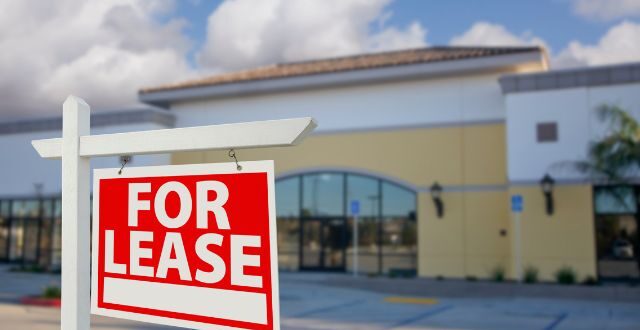Accounting principles are foundational to financial management, providing a roadmap for how to handle various business transactions and financial situations. For companies using leases, understanding the specifics of lease accounting under US Generally Accepted Accounting Principles (GAAP) is crucial. This article dives deep into the world of US GAAP lease accounting, its importance, and its implications for lease-using businesses.
Understanding US GAAP Lease Accounting
Leases are a common business practice, with companies often leasing assets like office spaces, machinery, or vehicles rather than purchasing them outright. However, the accounting for these transactions can be complex, requiring a thorough understanding of the US GAAP lease accounting standards.
Under the Financial Accounting Standards Board (FASB), which is responsible for overseeing and updating the GAAP, leases are categorized as either operating or finance leases. This classification determines how the lease is reported on the company’s financial statements and affects the company’s apparent financial health and tax liability.
Operating leases are treated like rental agreements, with the lease payments recorded as an operating expense on the income statement. The underlying asset is not included on the company’s balance sheet, meaning it doesn’t impact the company’s reported assets or liabilities.
Finance leases, on the other hand, involve the lessee essentially financing the purchase of the asset over time. For these leases, the present value of the lease payments is recorded on the balance sheet as both an asset (the right-of-use asset) and a liability (the lease obligation). The lease payments are divided into interest expense and lease liability reduction on the income statement.
The Impact of Recent Changes
In February 2016, the FASB issued an update to its lease accounting standards, known as ASC 842, which significantly impacted how companies account for leases. One of the most significant changes was the requirement for companies to include most lease obligations on their balance sheets, even those previously classified as operating leases.
This change was designed to increase transparency and comparability among companies by providing a clearer picture of their financial obligations. However, it also means that many companies’ reported liabilities have increased significantly, which could affect their financial ratios and lending agreements.
Importance for Lease-Using Businesses
Understanding and properly applying GAAP lease accounting rules is vital for lease-using businesses for several reasons.
Compliance
Firstly, publicly traded companies are legally required to follow GAAP in their financial reporting. Non-compliance can result in penalties, loss of investor confidence, and damage to the company’s reputation.
Financial Transparency
Accurate lease accounting ensures financial transparency. By properly accounting for their lease obligations, companies can provide investors, lenders, and other stakeholders with a clear picture of their financial health.
Decision Making
Good lease accounting can also aid in decision making. By understanding the financial implications of different types of leases, companies can make more informed decisions about whether to lease or buy assets, which type of lease to enter, and how to negotiate lease terms.
Tax Implications
Lease accounting can have significant tax implications. The way a lease is classified can affect the timing and amount of tax deductions a company can take. Therefore, understanding lease accounting can help companies plan more effectively for taxes and potentially reduce their tax liability.
Lease Accounting Impact: A Quantitative Snapshot
To understand the quantitative impact of lease accounting on a company’s financial statements, let’s consider a hypothetical example. Suppose a company enters a five-year lease for office space, with annual payments of $100,000, and the interest rate implicit in the lease is 5%.
Under the new GAAP rules, this lease would be classified as a finance lease and recorded on the balance sheet. Using a present value calculation, the lease liability and right-of-use asset would initially be recorded at approximately $432,190.
The following table shows how the lease liability, interest expense, and lease expense would be calculated and reduced over the lease term:
| Year | Lease Liability (Start of Year) | Interest Expense (5%) | Lease Payment | Lease Liability (End of Year) |
| 1 | $432,190 | $21,610 | $100,000 | $353,800 |
| 2 | $353,800 | $17,690 | $100,000 | $271,490 |
| 3 | $271,490 | $13,575 | $100,000 | $185,065 |
| 4 | $185,065 | $9,253 | $100,000 | $94,318 |
| 5 | $94,318 | $4,716 | $100,000 | $0 |
This table illustrates how the lease liability is reduced over time as the company makes lease payments, and how the interest expense decreases as the lease liability is paid down. It also shows how the total lease expense (the sum of the interest expense and the reduction in the lease liability) remains constant at $100,000 per year, reflecting the annual lease payments.
By understanding these calculations, companies can better predict the impact of their lease obligations on their financial statements and plan accordingly.
Navigating the Complexities of Lease Accounting
Given the complexities of GAAP lease accounting, many lease-using businesses may need to seek expert advice. Professional accountants can help companies understand the nuances of lease accounting, ensure compliance with GAAP standards, and provide insights into the financial and tax implications of different leasing strategies.
In addition, there are various software solutions available that can assist with lease accounting. These tools can automate many of the calculations and processes involved in lease accounting, saving time and reducing the risk of errors.
For lease-using businesses, understanding and correctly applying US GAAP lease accounting rules is essential. From ensuring legal compliance and financial transparency to aiding decision-making and tax planning, good lease accounting is a crucial part of financial management.
The recent changes to the GAAP lease accounting standards have only increased the importance and complexity of this area. Therefore, businesses should invest the time and resources needed to fully understand these rules and their implications, whether that means hiring a professional accountant, investing in lease accounting software, or providing additional training for their in-house accounting team. Only by doing so can they ensure that they are making the most informed, beneficial leasing decisions for their company.
 khamush.com Lifestyle | Motivation | Poems
khamush.com Lifestyle | Motivation | Poems




